



 WRITTEN BY Roseline Favresse Research Policy and Initiatives Director, EURORDIS-Rare Diseases Europe
WRITTEN BY Roseline Favresse Research Policy and Initiatives Director, EURORDIS-Rare Diseases Europe





 WRITTEN BY Roseline Favresse Research Policy and Initiatives Director, EURORDIS-Rare Diseases Europe
WRITTEN BY Roseline Favresse Research Policy and Initiatives Director, EURORDIS-Rare Diseases Europe
Empower rare disease patients worldwide. Break funding barriers for equitable care. Help ensure every rare condition receives the attention it deserves.
are diseases impact hundreds of millions worldwide but receive inadequate research funding. Traditional funding, designed for common diseases, fails to meet the unique challenges of rare diseases. Ensuring equitable care for every rare disease patient is crucial.
Need for rare disease research equity
Despite noble efforts to enhance funding for rare diseases in Europe, it remains fragmented and insufficient. Alarmingly, only a fraction of rare diseases have established therapies. This leaves most individuals with rare conditions in a precarious state, especially considering that 94% of rare diseases lack specific treatments. This isn’t just a medical issue — it’s a matter of equity and justice.
Collaborative treatment innovations
These partnerships must be designed to meet the needs of rare disease patients, not solely driven by market forces.
Innovative funding models are vital to support research from basic science to clinical trials and treatment development. We need novel business models to make research financially viable for even the smallest patient populations.
Data sharing to enhance research
Data sharing is another key factor. With 95% of rare disease patients willing to share their health data for research, a collaborative approach to data management across Europe could significantly speed up research.
Only a fraction of rare diseases have established therapies.
EURORDIS champions a patientcentric research approach, treating patients and their families as vital partners. Their insights and experiences are invaluable in enhancing research. A collaborative framework in Europe — and particularly, the upcoming European Rare Diseases Research Alliance (ERDERA) supported by the EU — uniting patients, researchers, industry partners and policymakers will be crucial to harness this potential.
Public-private partnerships are a promising strategy. They combine private-sector innovation with publicsector commitment to public health.
However, this needs a shift towards openness and a regulatory framework supporting secure and ethical data sharing.
European Member States and the UK, which has maintained an association with the EU’s Horizon Europe programme, must be encouraged to invest strategically in rare disease research.
Our European Conference on Rare Diseases and Orphan Products (ECRD) 2024, scheduled for 15 and 16 May in Brussels and online, will feature a session on boosting research funding. The conference is supported by the European Commission, AFMTéléthon and several healthcare companies. Together, we can ensure no patient is left behind due to their condition’s rarity.
 WRITTEN BY Dr Rick Thompson CEO, Beacon: for rare diseases
WRITTEN BY Dr Rick Thompson CEO, Beacon: for rare diseases
UK rare disease research is evolving. Learn about recent investments, EU collaborations and the pivotal role of patient experiences in advancing meaningful treatments.
People living with rare diseases are lacking effective treatments. Many rare conditions remain untreated, and reliable information is hard to find — whether it’s due to genetic complexity or limited research in affected children. Overall, comprehensive rare disease research is hindered by limited patient populations and insufficient investment.
Interruption in UK rare disease research
Following Brexit, the UK’s access to many EU projects, including Horizon Europe and the European Reference Networks, became limited. This made it harder to secure international research funding and engage with the collaborative networks that are vital to successful rare disease research.
investment by LifeArc to fund rare disease research centres around the UK.
These schemes all aim to address the core problems facing untreated rare disease patients by pooling funding, expertise and experience into a central network. This will allow them to focus on a specific rare challenge and turn good science into treatments for patients.
Patient experience:
Researchers can only help people living with a rare disease if they truly understand the problems they are facing.
New and evolving research landscape
The announcement of the UK’s reassociation to Horizon Europe in September 2023 is therefore a significant step for the UK rare disease community. A return to the premier source of European research funding, which has actively championed rare diseases, serves as the capstone to a year of positivity for UK rare research.
In July, the Medical Research Council and NIHR announced a new £14 million investment into a UK Rare Disease Research Platform. This will be complemented by a £40 million
key to research delivery
Even with all the investment and scientific knowledge in the world, researchers can only help people living with a rare disease if they truly understand the problems they are facing. Patients need to be placed at the heart of new research programmes, providing their opinion and expertise to guide science in the direction needed to produce meaningful, impactful and cost-effective treatments.
Thankfully, there is a real desire within the new UK networks, as well as recently funded EU projects like REMEDi4ALL, to bring this patient perspective into everything they do. If successful, the UK rare disease community can be optimistic that the research landscape is on the verge of a significant step forward, one which should ensure benefit to those living with a rare disease every day.

While great strides have been made in the management of haemophilia, more can be done to support people living with the condition to thrive without compromise.
 Manager,
Manager,
WRITTEN BY
Tony GreenwayIt goes without saying that significant strides have been made, impacting the prospects of people diagnosed with haemophilia. For context, 100 years ago, the average life expectancy of someone with haemophilia was 13 years. By the 1960s, it increased to 20 years. Today, it is similar to that of the general population.
The effects of haemophilia are not always visible
“Despite this, people living with haemophilia can still face significant challenges,” says Sharon Hall, Vice President and General Manager, of Sobi UK and Republic of Ireland, a specialised international biopharmaceutical company.
Haemophilia is a lifelong bleeding disorder. Often inherited, it is caused by a deficiency of a protein called factor, which is important for blood clotting. Someone with haemophilia may take longer than normal for
bleeding to stop if the condition is not being appropriately managed. However, a bigger concern is the bleeding that happens in joints or muscles, sometimes without having an injury.
Although these bleeds can be visible through bruising, swelling, pain and stiffness, bleeds can also be silent and occur without symptoms; these are known as ‘microbleeds’ and can cause long-term damage to the joints. The impact of bleeds and joint damage can lead to chronic joint and muscle pain, which can be debilitating.
“People with haemophilia may feel they have to make compromises,” notes Hall. “They might avoid vigorous sport or even minor physical activities for fear of having bleeds. This can lead to apprehension and trade-offs which impact how they live their life on a daily basis. And, as they learn to live with their condition, this compromise can become part of their norm.”
Support services are critical
“It is estimated that, globally, 30% of the general population has chronic pain, but for people with haemophilia, the rates are considerably higher. UK research found that around 60% of adults living with haemophilia were aware of pain constantly or most of the time, with over 50% reporting chronic pain,” explains Hall. “Plus, what’s less well-known is the impact on mental health. Having to limit activities to manage pain and deal with the worry of bleeds can take its toll.”
Ensuring the right infrastructure is in place to help people with haemophilia live the life they want to live, no matter where they are in the country, is vital.
But, Hall believes the conversation around haemophilia is changing and can continue to evolve. She notes the drive for equity of support for those living with the condition. “Ensuring the right infrastructure is in place to help people with haemophilia live the life they want to live, no matter where they are in the country, is vital. We must continue to find ways to ensure the same wrap-around care services, such as physiotherapy and psychological support, are available to all those who need it.”
Empowering people with haemophilia to have informed consultations
Providing people with the encouragement and tools to enable them to have conversations with their healthcare professionals about any lifestyle needs that are not being met is also critical.
“We are seeing more focus on supporting people to be aware of their options, by informing them on the latest practices and guidance. Yes, management and treatments have advanced dramatically — but people’s confidence about their condition may not have advanced at the same rate.”
“I’m optimistic that with the care and treatments available today and the dynamic landscape, we will continue to see improvements in haemophilia management.” insists Hall. “If we could enter a new era of zero bleeds, it would reduce the need to compromise and enable people with haemophilia to live the life they want — and deserve — to lead. That’s an exciting prospect for the future.”
Paid for by Sobi


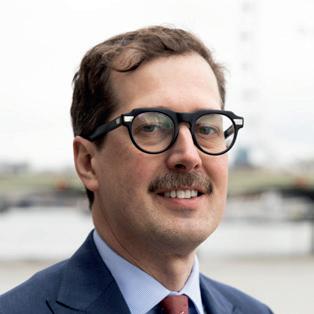 WRITTEN BY Nick Meade Director of Policy, Genetic Alliance UK
WRITTEN BY Nick Meade Director of Policy, Genetic Alliance UK
Find insights into UK rare conditions: explore prevalence, challenges and opportunities with crucial data and analysis on the Rare Disease Day report.
Around 3.5 million people are affected by rare conditions in the UK, and it is estimated that there are over 7,000 rare diseases, with new conditions regularly identified through scientific progress. However, it is hard to find data that breaks down this number in a usable way. Which are the most prevalent? Are we serving the individual populations fairly? Our small research study aims to answer these questions.
Rare condition database analysis
Our download from the European rare condition database Orphanet contained 163 of the most prevalent rare conditions. Research suggests that these conditions account for around 80% of everyone living with a rare condition. We aim to examine how well the UK serves this population, as a first step to examining all rare conditions.
Challenges in rare condition diversity
Our first surprise was how hard it can be to find information about certain services for rare conditions. Some specialised services are named for the condition they cover, like cystic fibrosis, but most others require specialist knowledge both about the condition and how health services are organised to understand who is responsible for care.
Some of the eye conditions, like Stargardt disease, are not listed by name but included as ‘ocular genetic
disorders.’ This poses a challenge for self-advocacy within the NHS — a challenge that would be mitigated by an atlas of rare conditions.
We were not expecting the breakdown of rare conditions that we found. ‘Conventional’ rare conditions made up a majority of the conditions, both genetic and non-genetic rare conditions. However, we also found complications of surgery and rare symptoms of other conditions included as conditions in their own right.
Opportunities in rare condition management
These findings offer new opportunities in how we arrange our services, how we disseminate information about very rare conditions and how we might be able to diagnose conditions based on prior medical history. This is just a snapshot of the opportunities that we might be able to access if there is a thorough examination of the rare condition population in the UK.
Collectively rare conditions are a serious health challenge to the NHS, but specifically, there is a lot we don’t know about many of the biggest rare condition health challenges we face. Systematic examination of the prevalence of rare conditions in the UK will provide many more opportunities for progress.
Read our Rare Disease Day report for more: geneticalliance.org.uk
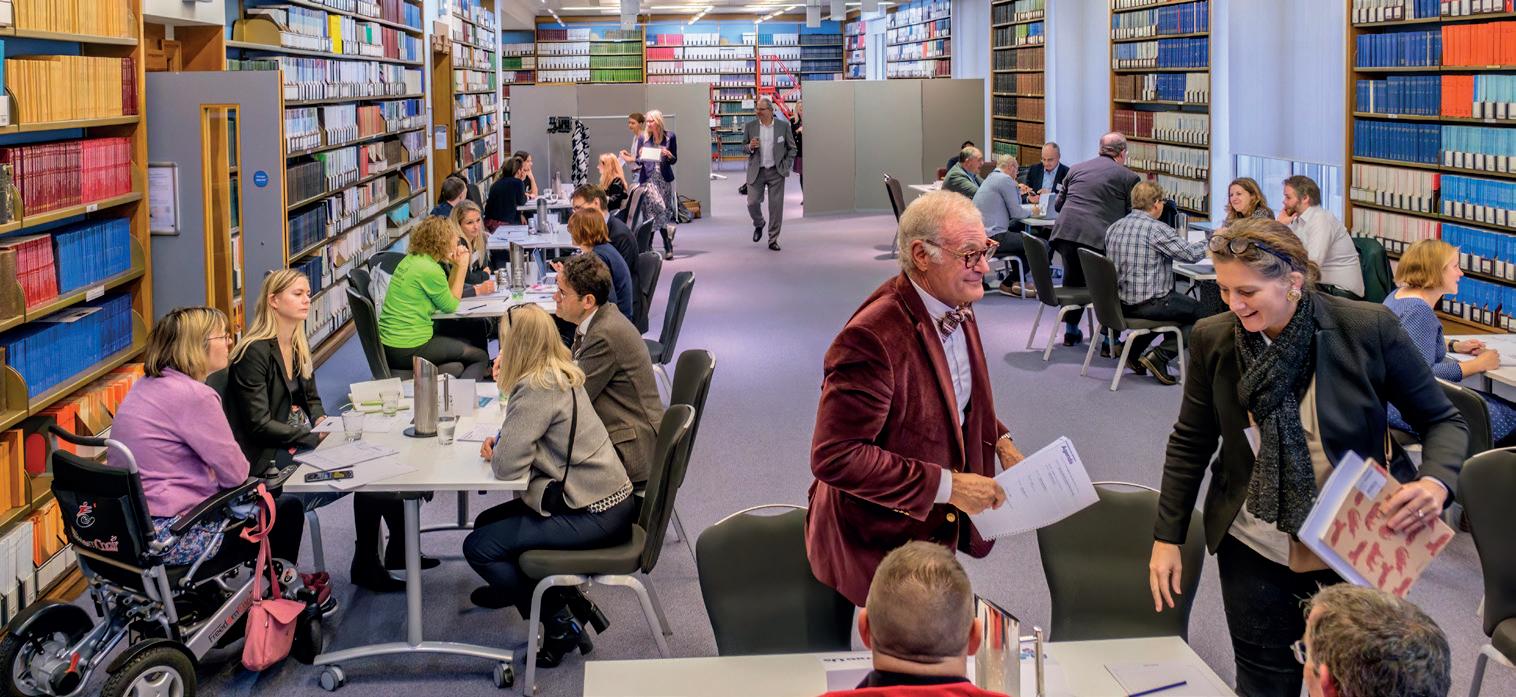
Patient support groups and drug development firms are seeking novel treatments for rare diseases through innovative approaches and consistent collaboration.
Rare disease support groups hold some of the key knowledge for developing new therapies. A new initiative leverages their knowledge, data and networks to streamline development processes previously considered unprofitable by drug firms.
Rare disease treatment matching
Aspire Biosciences, based in Cambridge, aims to address the significant unmet needs in the rare disease sector. Central to this is their Systematic Serendipity methodology, designed to enable economically viable treatment development while improving the odds of identifying new therapies, through a sort of targeted ‘speed-dating.’
CEO Dr Ron Jortner grew increasingly concerned about missed opportunities to develop treatments for rare diseases, as many lack therapeutic options. “The idea was to find a way to structure the identification of opportunities and the development of new treatments,” he says. Systematic Serendipity matches rare disease patient groups to R&D companies, then creates and nurtures working partnerships between them.
“This approach effectively eliminates the companies’ search costs, streamlines key steps in drug discovery and development, and makes the process cost-effective and commercially viable,” he continues.
Facilitating rare disease collaboration
Nina Knight, Operations and Development Officer at Aspire, reaches out to patient support groups

and sets up partnering cohorts.
The cohorts enable patient groups and their scientific advisors to form partnerships with companies to discover new avenues for collaboratively developing treatments in a way that is cost-effective and beneficial for all.
Knight, also Chair of Acrodysostosis Support and Research Charity, became involved in the space as her youngest daughter was diagnosed with a rare genetic disease.
Cohort event achievements
Aspire Biosciences have, so far, held four partnering cohorts, with 26 companies and 30 patient groups participating. These have given rise to 11 new development programmes.
An early success has been with the support group Cure DHDDS, founded by Mel Dixon after two of her children were diagnosed with the DHDDS gene mutation. Dixon reveals: “Thanks to Aspire Biosciences’ partnering cohort we now have three new research projects in the pipeline.” She describes it as an innovative platform that addresses a huge unmet need.
In the next 18 months, the company plans to run further cohorts covering neurological, blood, metabolic and liver conditions.
From the industry perspective, Dr Vikash Reebye, Senior Principal Scientist at MiNA Therapeutics, described the cohorts as the most productive networking platform he has attended. “This remarkable effort will undoubtedly make a huge impact in pushing rare disease research to the next level,” he insists.
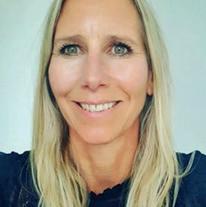
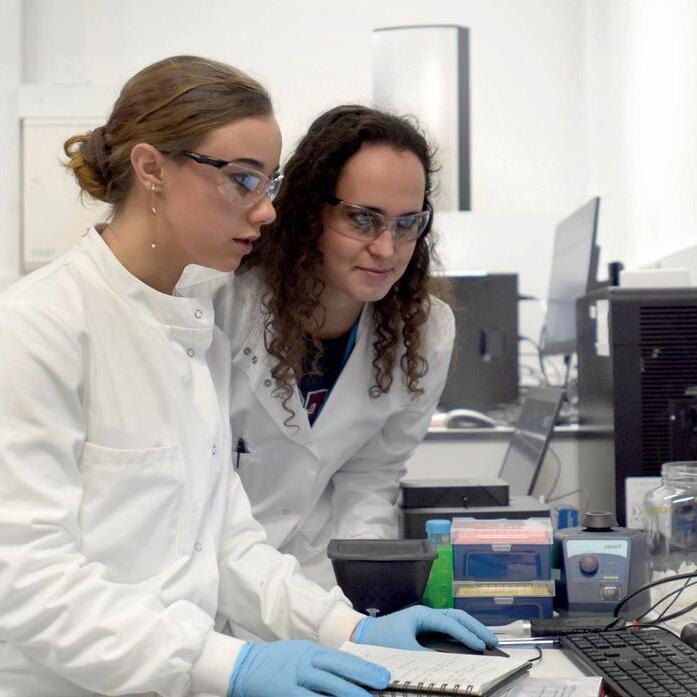
A rare disease drug development partnership aims to deliver 40 new therapies to clinic by 2033. The last year has seen significant progress in realising this vision for the 400 million people affected by rare diseases globally.
atthew Wood, Professor of Neuroscience and Director and Chief Scientific Officer of the Oxford-Harrington Rare Disease Centre (OHC), says: “Our Centre was established with a bold and ambitious global vision to transform the treatment of rare diseases. Our new Accelerator takes this a step further with its unique, collaborative, integrated for-profit and not-for-profit model. By combining resources and adopting innovative approaches, we can truly accelerate the development of new drugs for patients in need.”
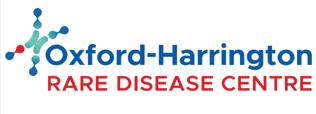
Helping families affected by rare disease
Jonathan Stamler, MD, President and Founder of Harrington Discovery Institute, says: “Harrington has been supporting the advancement of treatments for rare and other diseases for more than a decade, committing
Learn about the potential of cell and gene therapies with expert insights. Discover how treatments offer hope for both rare and more common conditions.
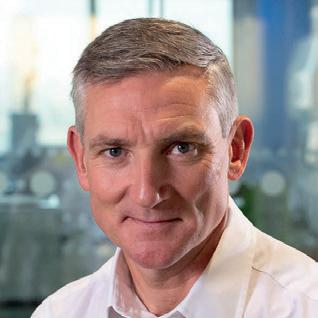
Aleading expert highlights how the cell and gene therapy industry stands at a pivotal moment in advancing patient care. With treatments available for rarer conditions, Matthew Durdy emphasises the potential to offer hope for patients with more common conditions.
Outlining the potential of cell and gene therapies to treat rare and more prevalent conditions, Durdy says:
“The beauty of cell and gene therapy is that it starts from a different premise from the therapeutics of the last 100 years, with the focus on an intent to significantly change, modify or cure a disease. Very often, it is a single application that has an enduring effect, potentially for a
significant funds and resources to this global challenge with considerable success. Our commitment is to major unmet needs in society to better the world. This new Accelerator and extended collaboration with Oxford and Oxford Science Enterprises represents a major step forward towards finding the best medicines that improve outcomes for the millions of individuals and families affected by rare diseases.”
Accelerating new drugs for rare diseases
Launched in October 2023, the Oxford-Harrington Therapeutics Accelerator will co-invest up to £200 million from University Hospitals in Cleveland, Ohio and Oxford Science Enterprises. It pairs academic project funding with drug and business development expertise from seasoned pharmaceutical industry leaders.

lifetime, and that is what makes it extremely exciting.”
As Chief Executive of the Cell and Gene Therapy Catapult (CGT Catapult), a research and technology organisation focused on the advancement of the cell and gene therapy industry, he says products have already been shown to work, with appropriate safety, and have navigated the regulatory process.
In theory, any monogenetic disease with an identifiable mutation could be addressed with gene therapy. Current treatments cover spinal muscular atrophy (SMA), haemophilia and liver metabolic disorders. Now, sickle cell anaemia, diabetes, cardiac disease, Parkinson’s and cases where previous therapies failed are under consideration for treatment.
David Cameron, former UK Prime Minister and founding Chair of the OHC Advisory Council remarks: “I know, from having a son born with an incredibly rare and incurable disease, how little we really know about rare diseases. Although individually they may only affect small numbers of patients like my son, Ivan, collectively, they represent a major global health crisis that affects millions of patients and their families in life-changing ways.”
The first investment by the Accelerator was made in a new company, AlveoGene, which is developing inhaled gene therapies for patients with rare respiratory diseases.
Delivering pathways to individualised medicines
Furthermore, the OHC is pivotal in the UK’s new Rare Therapies Launch Pad, aiming to provide personalised antisense oligonucleotides for children with severe neurological conditions in collaboration with Genomics England, the UK regulator MHRA, patient representatives and others.
Funding for rare disease drug development
The Centre has launched its first call for funding for promising UK and North American academic drug development projects, which will support ten rare disease Scholars per year and add to its therapeutics pipeline.
“In the past, there would be few treatment options, but some people are now being given lifesaving genemodified cell therapies,” Durdy adds.
Initially, developers prioritised rare conditions due to their clear treatment targets and clear unmet need. This focus has led to insights that are also applicable to more prevalent conditions.
“Working in the rare disease space has been fundamental to the development of the cell and gene therapy industry,” says Durdy. It provides a rationale to tackle risk and expense and explores options for broader conditions. Economic incentives further support the development of such treatments.
CGT Catapult works across the advanced therapies industry, collaborating with organisations developing cell and gene treatments for rare and common conditions, assisting health systems in adapting to intensive therapies and providing training to ensure there is a skilled workforce.
Durdy believes the healthcare industry faces a once-in-a-lifetime opportunity in cell and gene therapy development. “It is potentially industry-changing and is well worth taking the risk. In fact, if we don’t make that investment, we are going to fall behind the rest of the world.”

WRITTEN BY Matthew Wood Professor of Neuroscience, Oxford Department of Paediatrics and Director and Chief Scientific Officer, OHC

WRITTEN BY Jonathan Stamler, MD President and Co-Founder, Harrington Discovery Institute

WRITTEN BY Julie M. Stevens Director of Operations, OHC
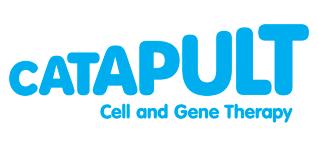
Explore the global impact of rare diseases in an interactive initiative showcasing achievements and advocating for 300 million people with a rare disease.
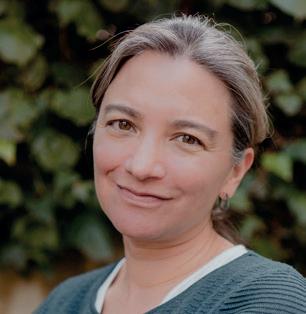 WRITTEN BY Debra Bellon Strategic Engagement Manager, Rare Diseases International
WRITTEN BY Debra Bellon Strategic Engagement Manager, Rare Diseases International
Rare diseases, once seen as isolated conditions, now reflect common and complex challenges.
Mobilisation of civil society has prompted scientific advancements and improved healthcare emerging policies across countries.
While promising for the 300 million Persons Living with a Rare Disease (PLWRD) worldwide, they still encounter persistent challenges globally, including diagnosis delays, treatment access issues, social stigma and financial burdens.
Rare disease awareness initiative
For Rare Disease Day 2024, Rare Diseases International (RDI), the global alliance for rare diseases, is seeking to bring awareness to the challenges faced by people with rare diseases and highlight the many achievements of its community members.
The alliance is launching ‘Mapping Rare’, an interactive map highlighting key accomplishments and initiatives created by and for the rare disease community. While the project will eventually document achievements across the world, the initial launch will focus on 12 countries.
Advocating for rare disease rights
Mapping Rare aims to send the message that, by actively advocating for the rights of PLWRD, the rare disease community can ensure that PLWRD are seen, recognised and accounted for by policymakers and healthcare systems.
The project draws on years of advocacy by RDI and its members at the international and national levels and seeks to build on the political momentum that has been growing since the first-ever United Nations resolution on rare diseases in 2021. This recognition and the introduction of rare diseases in the scope of Universal Health Coverage provide a pivotal opportunity to address the challenges of PLWRD and their families.
By actively advocating for the rights of PLWRD, the rare disease community can ensure that PLWRD are seen.
Examples include the creation of a national rare disease network in Canada, a successful campaign to replace offensive technology used in the full name of Fragile X Syndrome, and a policy change to allow Tanzanian children with rare diseases to access suitable education options.
Investing in life-saving research and care for each and every child
Global action plan for rare disease
RDI is now calling on the World Health Assembly to adopt a Global Action Plan on rare diseases as the most effective way to ensure that PLWRD in all countries have access to the care and services they need.
As one of the building blocks of this project, Mapping Rare will serve as a tool that raises awareness, showcases achievements and demonstrates the strength of the rare disease community.
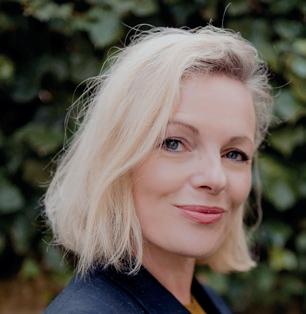 WRITTEN BY Alexandra Heumber Perry Chief Executive Officer, Rare Diseases International
WRITTEN BY Alexandra Heumber Perry Chief Executive Officer, Rare Diseases International
A child doesn’t have to die from cancer for it to take their life. It can take away their childhood, their opportunities to learn and even to have children of their own one day.
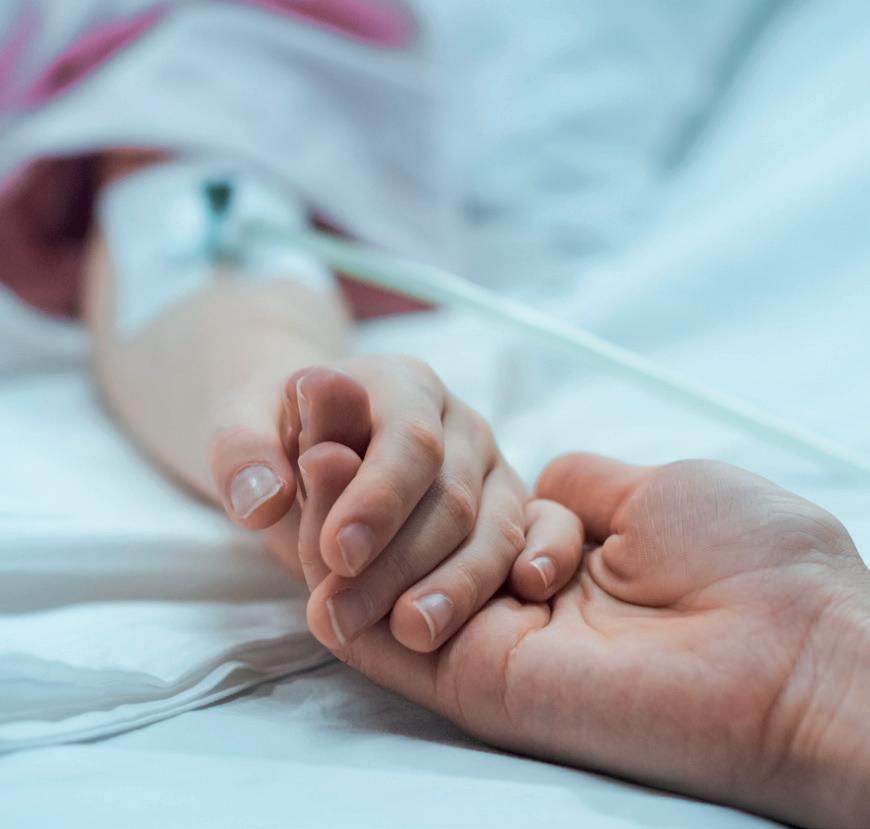
 WRITTEN BY Louise Parkes CEO, Great Ormond Street Hospital Children’s Charity
WRITTEN BY Louise Parkes CEO, Great Ormond Street Hospital Children’s Charity
At Great Ormond Street Hospital Children’s Charity (GOSH Charity), we believe that every child deserves a childhood – and a future. That’s why we’re building a world-leading Children’s Cancer Centre at Great Ormond Street Hospital (GOSH), to bring new breakthroughs to life and help more children beat cancer.
Designed with the needs of children and families at its heart, this state-ofthe-art centre will be far more than just a building. It will support every aspect of care for children and their families, from diagnosis to remission. With digitally advanced wards, cutting-edge imaging technology,
state-of-the-art treatment facilities and a new school, the centre will treat the child, not just their disease. It will be a gateway for children from across the UK to go on to better futures, where they not only survive but thrive; and that’s not all we’re doing to help beat childhood cancer.
Despite incredible advances in research and care, some childhood cancers still have just a 2% chance of survival. It’s a stark reminder that we have a long way to go to reduce the burden of this devastating disease.
In the UK, only 2p out of every £1 spent on cancer research each year
goes towards dedicated research projects for childhood cancers. As the UK’s largest dedicated funder of child health research, GOSH Charity aims to transform the lives of seriously ill children through research-led care. That’s why we’re investing £70 million towards research into rare or complex child health conditions, with more than £15 million allocated to children’s cancer research alone. This will advance our understanding of the biology of this disease and develop new diagnostic tests, treatments and cures.
Within the last decade, we’ve supported huge developments in CAR-T therapy, which programmes the body’s own immune cells to attack and kill cancer cells. When twoyear-old Austin was diagnosed with leukaemia, there were few options for him.
Thanks to pioneering GOSH researchers, supported by the charity, Austin received a brand-new CAR-T therapy. He’s just turned 15 and is cancer free. The hospital has a team of dedicated doctors, nurses, allied health professionals and researchers who are specialists in the most complex conditions. The new Children’s Cancer Centre will give them the specialist facilities to match, but we can’t do this alone. Together, we can help beat childhood cancer.
Paid for by Great Ormond Street Hospital Children’s Charity

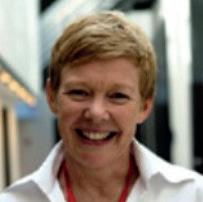 WRITTEN BY
WRITTEN BY
Find out how AI and various schemes are revolutionising rare disease diagnosis, bridging healthcare gaps and offering hope for patients facing barriers in access to care.
People living with rare diseases face many hurdles, including lengthy diagnostic journeys, few treatment options, and limited awareness of their conditions.
Rare disease diagnostic challenges
On average, it takes nearly five years — and often longer — to receive a rare disease diagnosis, a journey that often involves multiple doctors, specialists and misdiagnoses.1
Living with a rare condition can make nearly every aspect of life difficult. Patients and caregivers often experience economic hardship, greater social isolation, significant delays in treatment and poorer health outcomes.
Delayed diagnosis can also cause downstream costs to health services. In the past decade, undiagnosed rare diseases have cost the NHS over £3.4 billion. Patients with rare diseases attend hospitals twice as frequently as others, costing the NHS four times more on average.2
Accelerating diagnosis with AI
The emergence of AI holds vast potential for all aspects of healthcare, revolutionising patient care through improving earlier diagnosis, accelerating drug development and proactive digital monitoring for better outcomes.
diseases. However, the unique characteristics of rare diseases, such as smaller patient populations, higher treatment development costs and uncertainty around the evidence base generated from clinical trials, create challenges for healthcare systems when assessing the value of these medicines.
Various schemes aim to enable early access to new medicines for rare diseases. The Early Access to Medicines Scheme (EAMS) gives patients with life-threatening or seriously debilitating conditions access to new medicines that do not yet have a marketing authorisation when there is a clear medical need.
Undiagnosed rare diseases have cost the NHS over £3.4 billion.
The Innovative Medicines Fund (IMF) was created for patients with non-cancer conditions, including rare diseases, to benefit from access to new medicines while additional evidence is collected on their clinical effectiveness. However, since its 2022 launch, the £340 million fund has not yet been used for its primary intended purpose, due to overly restrictive criteria. Evolving the IMF design could allow patients access to new medicines earlier than anywhere else globally.
Hope for improved rare disease care

Date of preparation: February 2024
Document number: UK/NP/0153
The complexities of rare diseases lend themselves to the digital revolution we live in. We initiated Project Find and commissioned Mendelian, the UK-based digital health company, to build software to help doctors identify and diagnose rare disease patients faster.
Our ultimate ambition is to reimagine healthcare. By harnessing emerging technologies and digital health, we have the potential to drive the step-change in healthcare to take more patient-centric approaches and better serve patients living with rare diseases.
Ensuring access to care and medicines
Advances in science have enabled new life-changing and potentially curative treatments for rare and ultra-rare
Championing policy initiatives, overcoming diagnostic hurdles, bridging gaps in access to care and medicines, as well as fostering collaborative strategies in genomic medicine, will help us unlock the diagnostic journey for patients. Together, we can pave the way for a brighter future for people with a rare disease in the UK and beyond.
References
1.Zhang Z. Diagnosing rare diseases and mental well-being: a family’s story. Orphanet J Rare Dis. 2023;18(1):45. Published 2023 Mar 6. doi:10.1186/s13023-023-02648-y
2.Department of Health and Social Care, NHS England. Thousands of patients to benefit from quicker diagnosis and more accurate tests from ground-breaking AI research. Available at: https://www.gov.uk/government/news/thousands-of-patients-to-benefit-from-quickerdiagnosis-more-accurate-tests-from-ground-breaking-ai-research#:~:text=In%20the%20 past%20decade%20undiagnosed,times%20as%20much%20on%20average. Last accessed: February 2024.
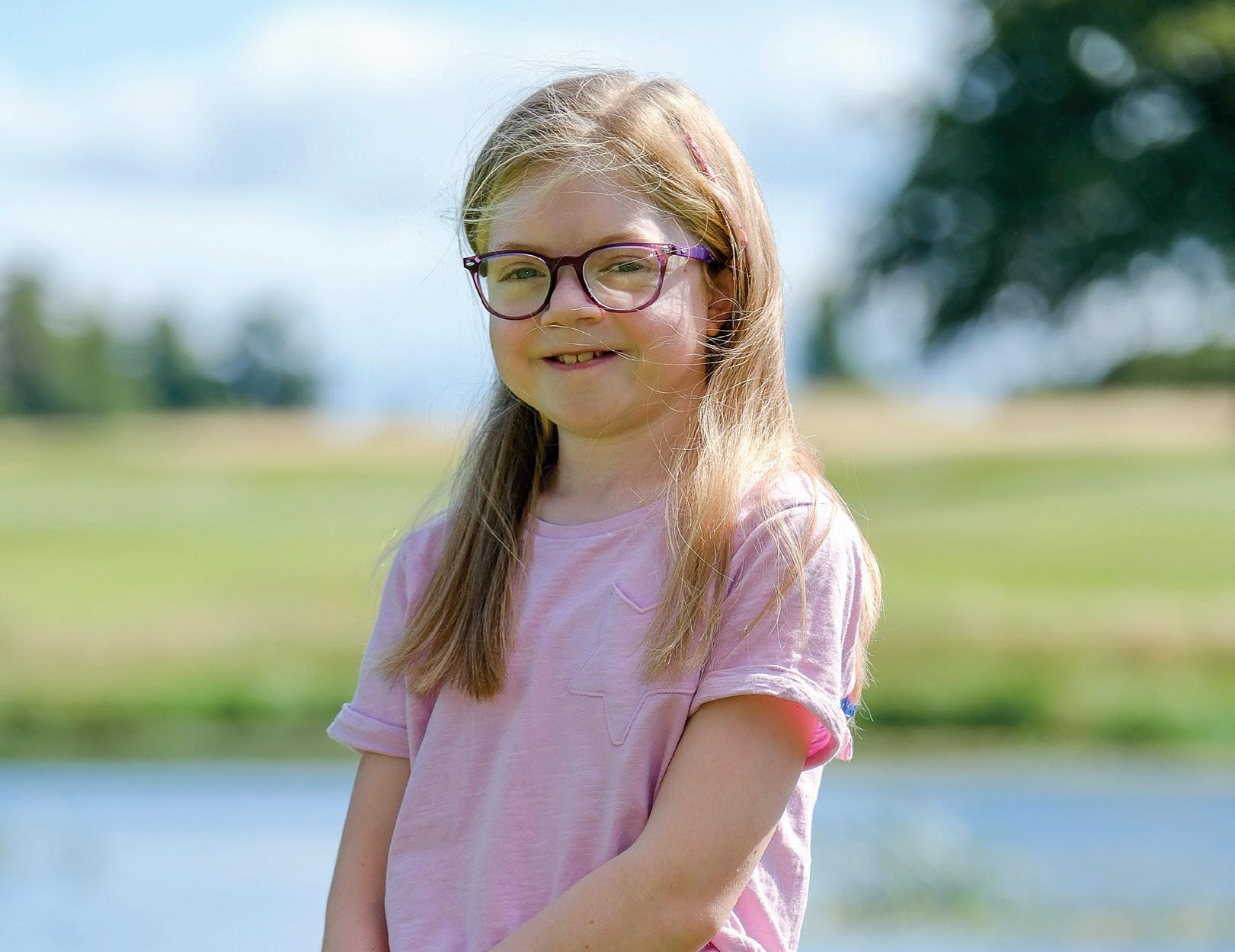
WE ARE PROUD TO SUPPORT RARE DISEASE DAY 2024
Alexion's 30 years of pioneering science has led to the development of transformational medicines for people like Anna living with a rare disease.
Birmingham is making a real-world impact on rare diseases, with a comprehensive multi-facility network for research helping to find new treatments for patients like those with Wolfram syndrome.
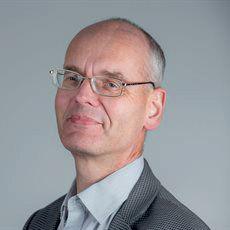
INTERVIEW WITH
Rare Disease Day reminds us of the challenges faced by individuals grappling with rare disease. Though most of the population will not have a rare disease, it’s vital that those who do receive equitable levels of care, research and treatment.
Getting a rare disease diagnosis
Shiffa, diagnosed with diabetes as a child, started insulin injections to manage her blood sugar. Vision symptoms emerged aged 6, leading to blindness. She says: “I had tests done in lots of places, and nobody could explain my symptoms.”
the study have uncovered the disease mechanism and discovered a potential treatment. They’re now spearheading the first global clinical trial of a repurposed drug for Wolfram syndrome.
The trial provides a beacon of hope for patients like Shiffa. Professor Tim Barrett, Chief investigator for the Wolfram trial, explains: “For patients with Wolfram syndrome, we hope to have treatments in the next few years which will slow or stop disease progression.”
Birmingham as a rare disease hub

INTERVIEW WITH
WRITTEN BY Bethany Cooper

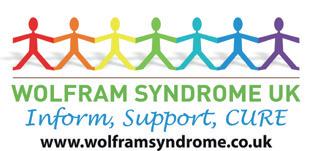
For Shiffa, it took years to be diagnosed with Wolfram syndrome, a rare genetic disorder that affects only 1 in 500,000 people. Shiffa has now lost most of her sight, due to a gradual loss of brain cells, which may affect her hearing, balance and other vital functions. Alongside the physical symptoms, Shiffa stressed the importance of considering the emotional effects: “You have to talk to those around you. It is hard, but never give up.”
Aiding Wolfram syndrome research Wolfram Syndrome UK (WSUK), the UK charity aiding those impacted, was founded in 2010 by Paul and Tracy Lynch, after their daughter Jennifer’s diagnosis. It initially supported five individuals. Now, it assists 120 — a figure rising due to better diagnosis.
Tracy acknowledges: “We have come a long way in the last 14 years. We’re being recognised by larger organisations for our work supporting families affected by Wolfram syndrome, not just within the UK, but globally.”
WSUK are currently supporting the incredible work being done by the University of Birmingham Cancer Research UK funded Clinical Trials Unit, which has pioneered the TREATWolfram international drug treatment trial. WSUK funds travel and lodging for participants and collaborates with specialist clinics in Birmingham while supporting global research efforts.
TREATWolfram trial brings hope
Shiffa was among the first patients recruited for the groundbreaking TREATWolfram trial. Researchers leading
Shiffa relies on NHS England’s Wolfram specialised service, delivered at University Hospitals Birmingham and Birmingham Women’s and Children’s Hospital, linked through Birmingham Health Partners. They host the UK’s first adult and children’s Clinical Centres for Rare Diseases, managing over 500 rare diseases and streamlining appointments in a ‘one-stop shop’ model for those affected.
Birmingham Health Partners bring together the city hospitals and universities in an alliance to improve the health of the youngest and most diverse UK population outside London. Professor Barrett also identifies health inequality as the primary catalyst for Birmingham’s rise as a rare disease research hub: “Birmingham’s diverse population makes them disproportionately affected by rare diseases, while our location in the centre of the UK makes us accessible to patients and specialists from across the UK.”
Leading rare disease treatment research
Barrett explains: “We are scaling up our trials to get more treatments to more patients with rare diseases, faster.”
Birmingham’s commitment to rare disease research encompasses the whole translational research pathway from discovery science through integrated phase trials to real world evidence of treatments in the clinic. Major collaborations with industry, University of Birmingham’s world leading Cancer Research UK Clinical Trials Unit with specialised expertise in rare disease trials, and research supported by UK Medical Research Council and National Institute for Health Research make Birmingham the ‘go-to’ city to recruit to and deliver translational research that will benefit our UK rare disease community.

INTERVIEW WITH Shiffa Ahmed Participant in the TREATWolfram Clinical Trial
Find out more at: Birmingham.ac.uk/ research/crctu Birmingham.ac.uk/ research/rarediseases
